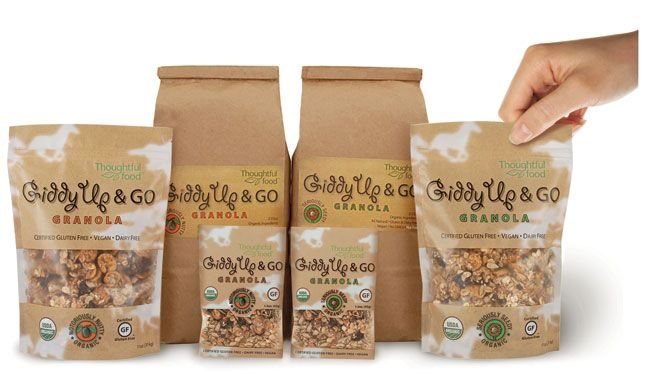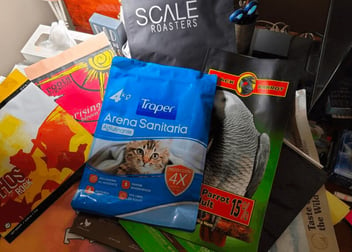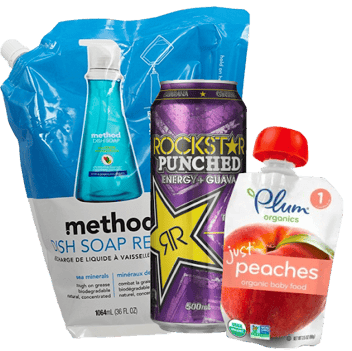The Reseller’s Guide to Eco-Friendly Packaging Materials — 3 Options

You’ve got a lot of options these days when it comes to eco-friendly packaging materials. Of course, the materials you select will depend on what you even mean by “eco-friendly.” We tend to throw it around as an umbrella term for all sorts of product traits. Do you mean biodegradable-compostable packaging? Are you talking about sustainable sourcing or manufacturing processes? What about the carbon impact of shipping the package?
Let’s dive into some of your potential choices.
Eco-friendly Shipping Packaging
The most important traits for the environmental impact on shipping will be weight and size. Heavy packaging or large, rigid containers that take up a lot of empty space can require more fuel and more trips to transport — even before they’re filled at the factory. One of the most eco-friendly retail packaging options today is flexible packaging, such as a stand up pouch, zipper bag, or spouted pouch. Flexible options use less materials, weigh less, and you can ship thousands at a time per pallet, unlike jugs and other large rigid containers.
Packaging That Reduces Landfill Impact
Any sort of packaging that can avoid a landfill entirely — recyclable, re-usable, compostable — is a potential option. However, keep in mind that many packaging materials will end up in landfills anyhow. The most important thing you can do to help our landfills is to ensure your packaging has as little impact as possible if it ends up in one.
Biodegradable or compostable options might work, but check to see if they’ll be able to degrade in landfill conditions. Many compostable materials need to be properly composted to fully degrade in a reasonable period of time. Flexible packaging is especially good, here, because it disposes flat and uses less material than a rigid container while taking up very little space in a landfill.
Biodegradable - Compostable Packaging Materials
There are a few directions to go, here, from bioplastics that naturally degrade to compostable paper bags. Here are a few of the bioplastic acronyms to look out for:
- PLA: Polylactic acid is a type of bioplastic made from plant starch, often from corn, sugarcane, or beet pulp. Great for food packaging (it even resists greases and oils), it also offers great clarity and glossiness while creating a strong odor barrier. You can print on it, too!
- PBAT: Polybutylene adipate terephthalatecan can achieve up 90% degradation after just 80 days, and it will break down completely when home-composted. It’s used a lot in cling wraps, compostable plastic bags, and as a coating/lining in water-resistant paper cups.
- PVOH: Polyvinyl alcohol is a biodegradable plastic that can be made into a food-suitable water-soluble film — FDA approved! You’ll see it used for those film-encased dishwasher soap tablets, window washing concentrate capsules, toilet blocks, and other capsules, pouches, and water-soluble bags.
Kraft paper laminated bags combine these sorts of biodegradable plastics with natural paper to create beautiful and compostable layered eco-friendly packaging materials. Check out some of the compostable pouch material options we offer at ABC Packaging — The Oversea Network and get in touch for a quote!





